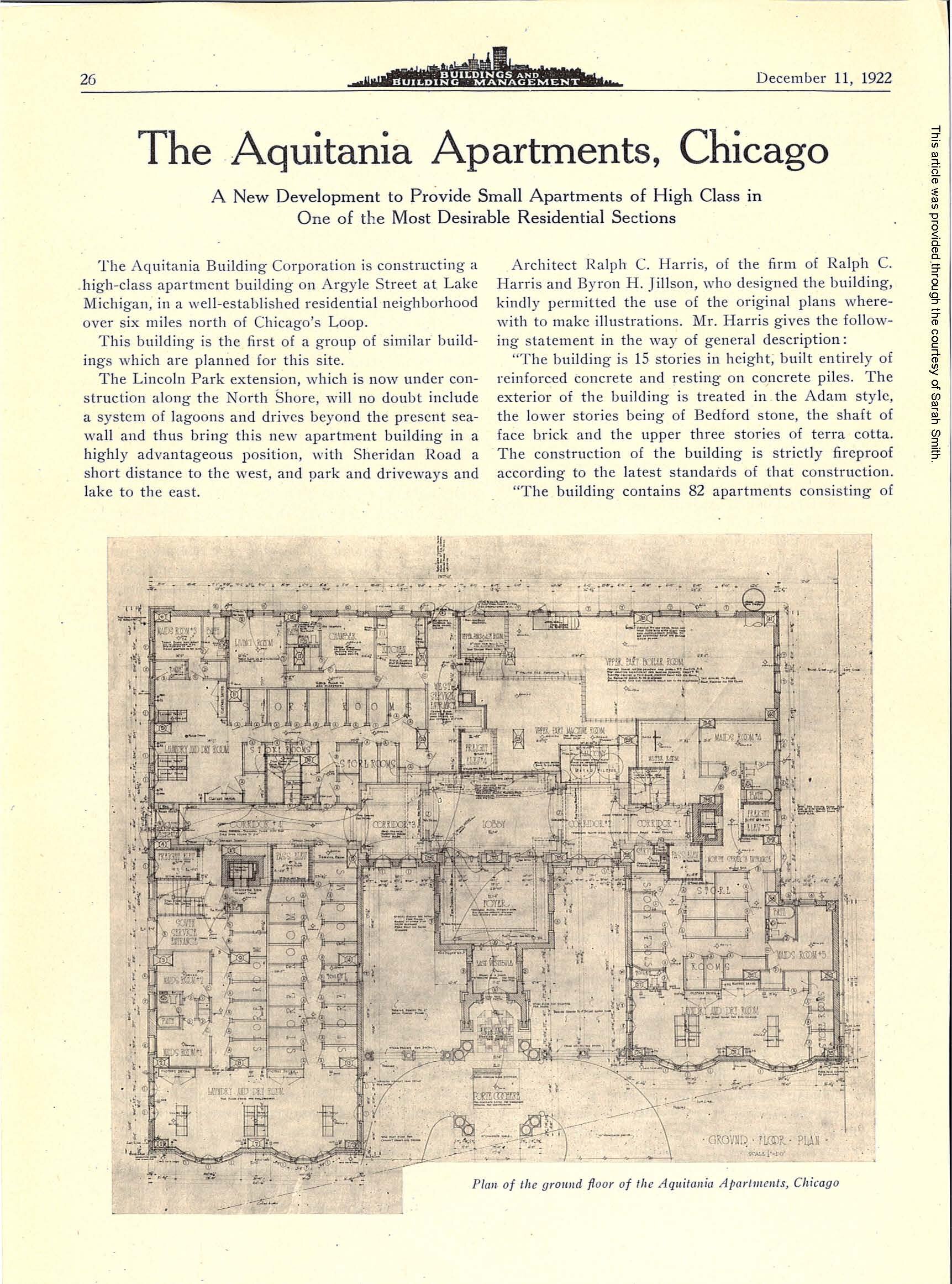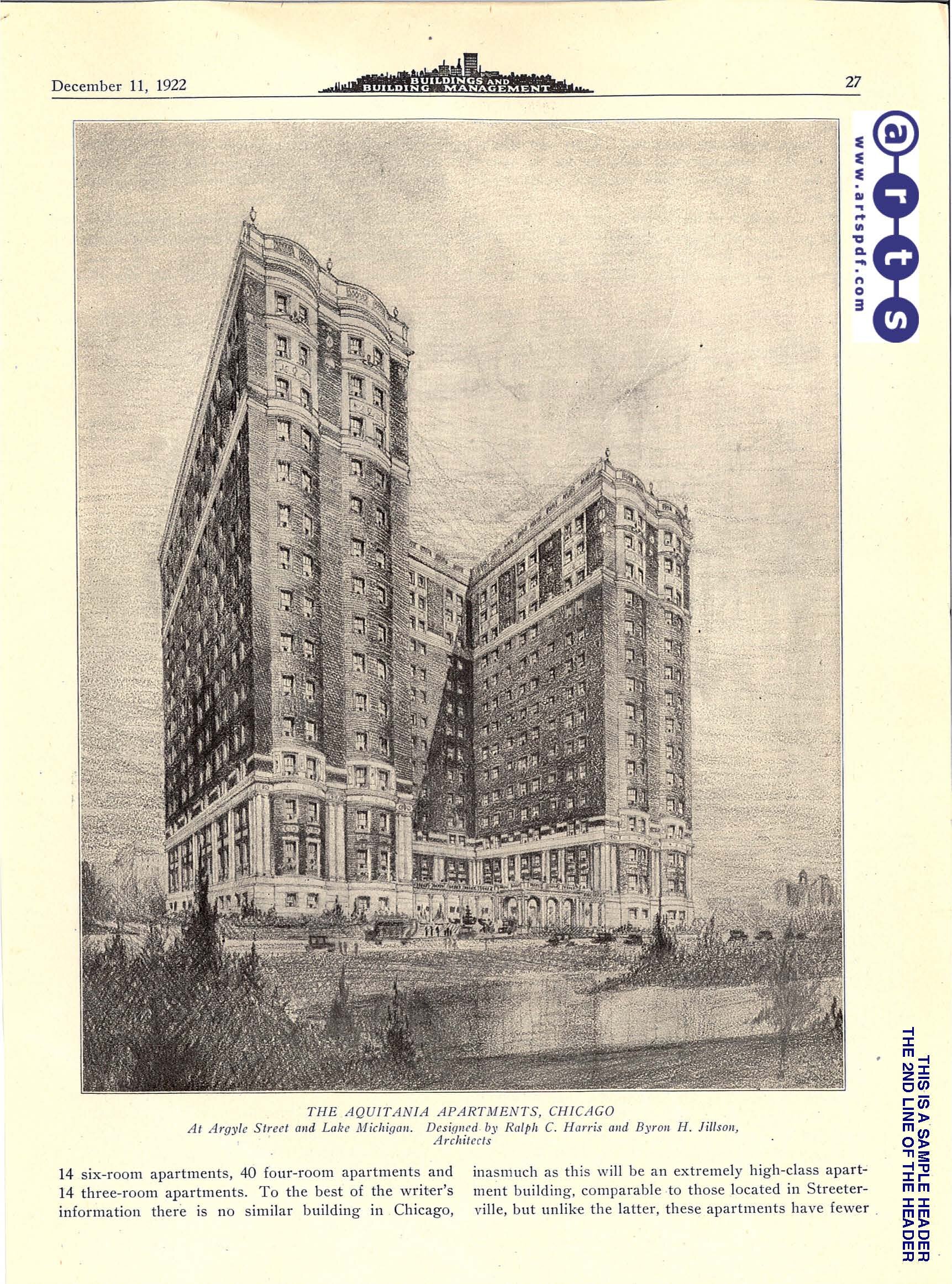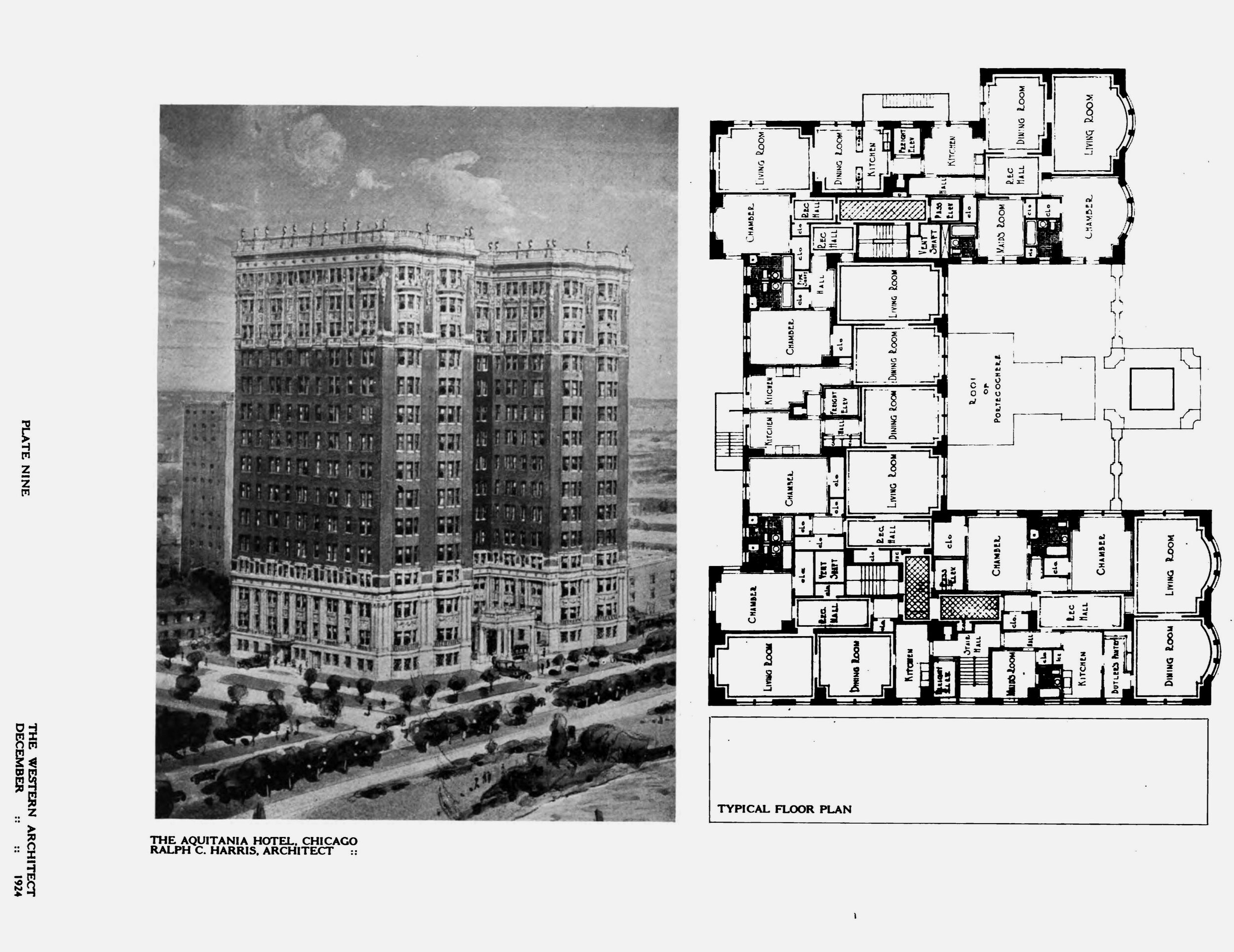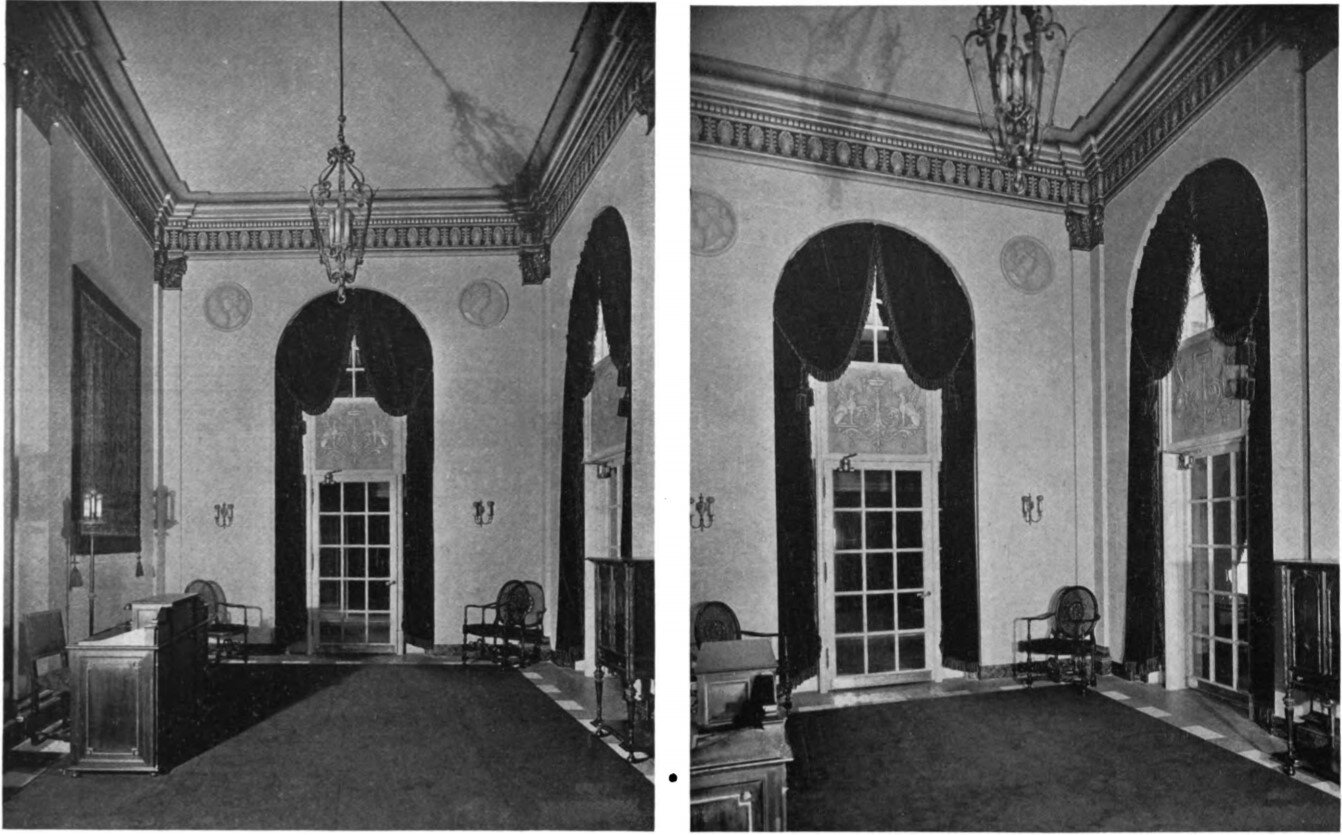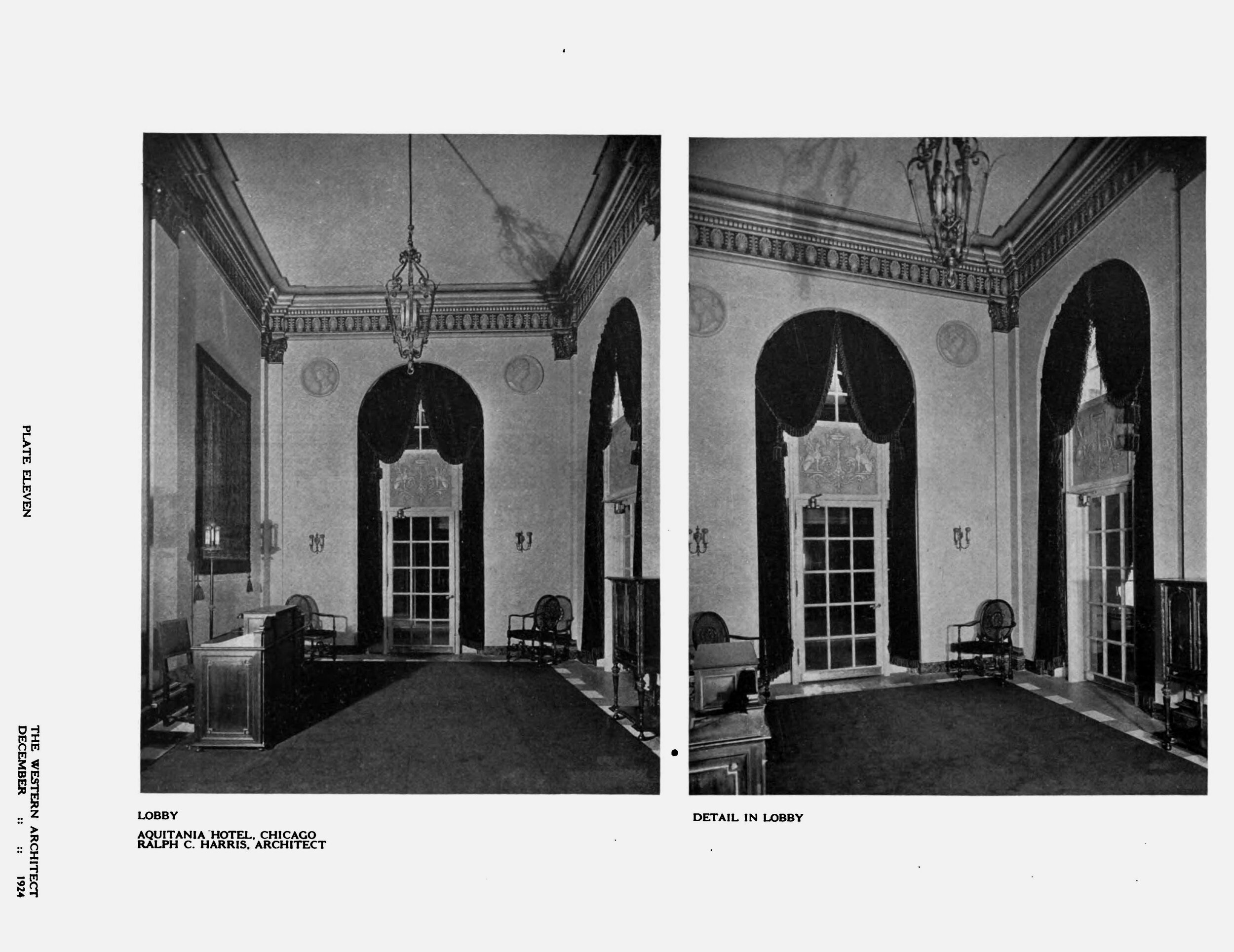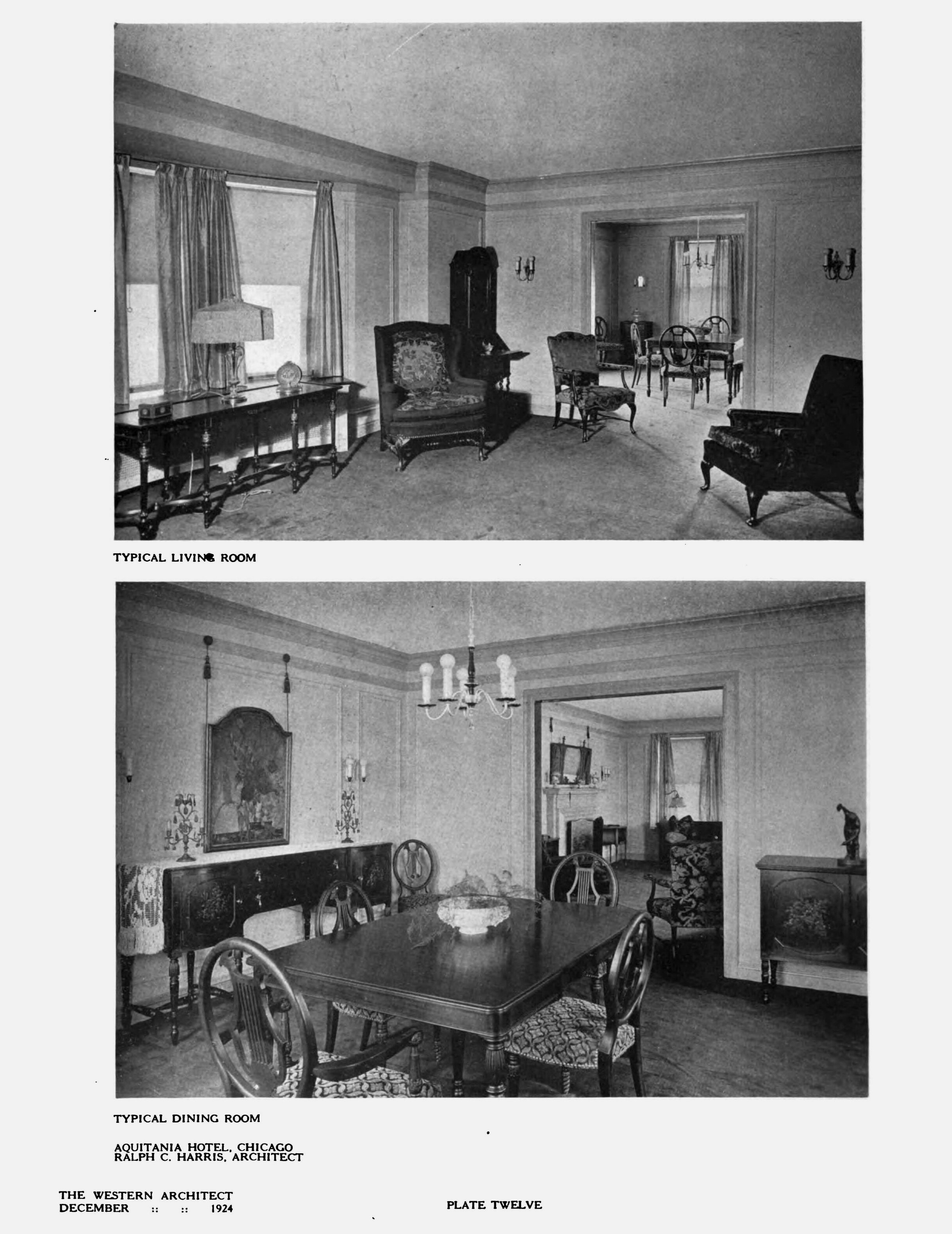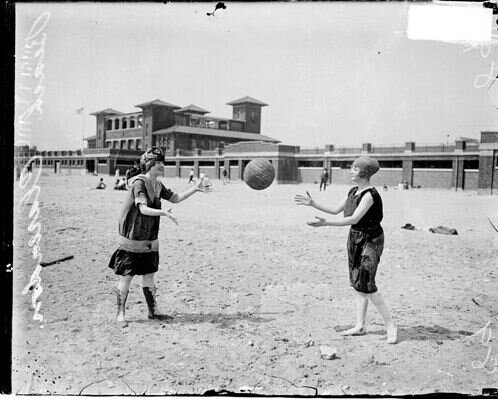
History
New York architects Ralph Harris and Byron Jillson were commissioned to build The Aquitania Hotel to house Essanay talent and employees who flocked to Chicago for film industry work. The magnificent Georgian edifice produced by Byron and Jillson sat on a parcel of lakefront land owned by Mr. Spoor just east of his home at 908 West Argyle Street.
The Aquitania (named for the famous Cunard ocean liner) was finished in 1923 – a splendid construction upon what at the time was a popular Lake Michigan beach. The building was designed to afford dramatic views from each apartment and boasted characteristically Georgian bay windows and distinctive terracotta ornamentation the likes of which are rarely found on any Chicago building of its size. Since 1949, The Aquitania has been managed as a co-op – a form of property ownership common in New York but somewhat rare in Chicago.
When The Aquitania was competed in 1923, it was situated directly on the Lake Michigan shore. The 15-story building has 82-unit cooperative apartments, a classic courtyard, and an Art Moderne lobby decorated with murals by Louis Weinzelbaum and original artwork by J. M. Cadel. The Aquitania became a cooperative apartment building in 1949, and was added to the National Register of Historic Places in 2002. In the early 1900s, George K. Spoor's Essanay Studio defined the art and success of motion picture production in the United States.
As the premier studio in the premier film-making city, Essanay employed the likes of Charlie Chaplin, Gloria Swanson, Wallace Beery, Beverly Bayne, and Francis X. Bushman. With renowned gossip columnist Louella Parsons as an early scriptwriter, Essanay produced silent films from the company's lot at 1345 W. Argyle, as well as from other Chicago-area locations.
HISTORICAL FACTS
Completed in 1923, the “Aquitania Apartment Hotel” was named after the R.M.S. Aquitania (meaning “Ship Beautiful"). A British ocean liner of the Cunard Line (in service from 1914 to 1950) R.M.S. Aquitania was one of Cunard’s longest-serving and most famous ships, and is considered among the most luxurious ocean liners of her time.
VINTAGE NEWS
Our beautiful historic building was the subject of numerous articles at the time of its construction. Many of these vintage articles were provided by the building’s shareholders over the years, who freely gave of their time to research them.
This article is from 1922, written while the building was still under construction. This one is a treasure as it shows some of the original architectural plans and what the rental cost for units were at the time. It also clearly shows the building’s proximity to the lake prior to the Lake Shore Drive infill project that occurred later in the 20th century.
This article, from The Western Architect in 1924, was written a year after the building was completed. It captures how the building appeared in its original form. For shareholders, it evokes a sense of wistfulness to see that some of original external architecture no longer exists. However, if you compare the interior photos of the units today, it is evident that many still maintain their original grandeur.
Uptown was originally settled by immigrant German and Swedish farmers. By the late 1800s, developers were being attracted to Uptown. By 1890, they had built what today are known as Gordon Terrace and Hutchinson Street into retreats for the wealthy.
Uptown’s development continued into the early 20th century when the Northwestern Elevated Railway Company and the Chicago North Shore and Milwaukee Rail Line were extended to Bryn Mawr for easy access to Chicago. The developer John Lewis Cochran influenced the railroad companies to build his developments, and the railroad helped the area to become a residential center.
In 1915, Loren Miller opened a branch of his Loren Miller & Company department store, which later became Goldblatt’s on Broadway, south of Lawrence. With the boast of the arrival of fashion in the neighborhood, Miller was able to convince city officials to name the intersection “Uptown Square.” This is how the neighborhood got its name.
Built to accommodate visitors and new residents including The Aquitania, Sheridan Plaza, the Lawrence House Hotel, and Edgewater Beach Hotel, to name a few. Three theaters drew a massive numbers of people to the neighborhood.
The Great Depression, World War II, the growth of suburbs, and the extension of Lake Shore Drive all impacted Uptown. Residents began looking for ways to recover financially, and this often included the conversion of large apartment units into smaller ones. Luxurious hotels like The Aquitania were turned into single-room-occupancy residences. As housing in Uptown becoming more affordable, and with access to public transit, the neighborhood began attracting immigrants and lower-income residents of Chicago.
During the 1940s and 1950s, Uptown residents began to include Appalachian-Americans from the South, Native Americans from the Midwest, and Japanese-Americans liberated from internment camps. Over time, as many of these immigrants settled into the city and moved up the social ladder, a new mix of immigrants from East and West Africa, Southeast Asia, and Latin America replaced them. As a result, today Uptown remains one of Chicago’s most ethnically diverse neighborhoods.
Through the 1970s and 1980s, many rehabilitation projects were launched in Uptown. Also, landmarks and areas were added to the National Registry including Buena Park, Castlewood Terrace, Argyle Street, and Sheridan Park. Buildings and historic structures were restored, rehabbed or expanded. New ones were built, too, and this also helped the neighborhood to rebound. One of the most impactful projects was Wilson Yards, the retail and housing complex (a large Target store is one resident) that replaced underused Chicago Transit Authority (CTA) tracks. Restoration continued with the renovation of the CTA Red Line/Purple Line Wilson Station, Somerset Place Apartments, the Lawrence House, and other historic buildings. In 2016, Argyle Street – from Broadway to Sheridan Road – became the first “Shared Street” in Chicago. Featuring brick pavers and no curbs, the design is ideal for public events. The intersection of Lawrence Avenue and Broadway was renovated in 2017 with new sidewalks, decorative street lights, and a new plaza near the Riviera Theater. In coming years, the Chicago Transit Authority plans to completely rebuild the Lawrence and Argyle CTA stations as well as restore over a mile of 100-year old tracks and viaducts.










